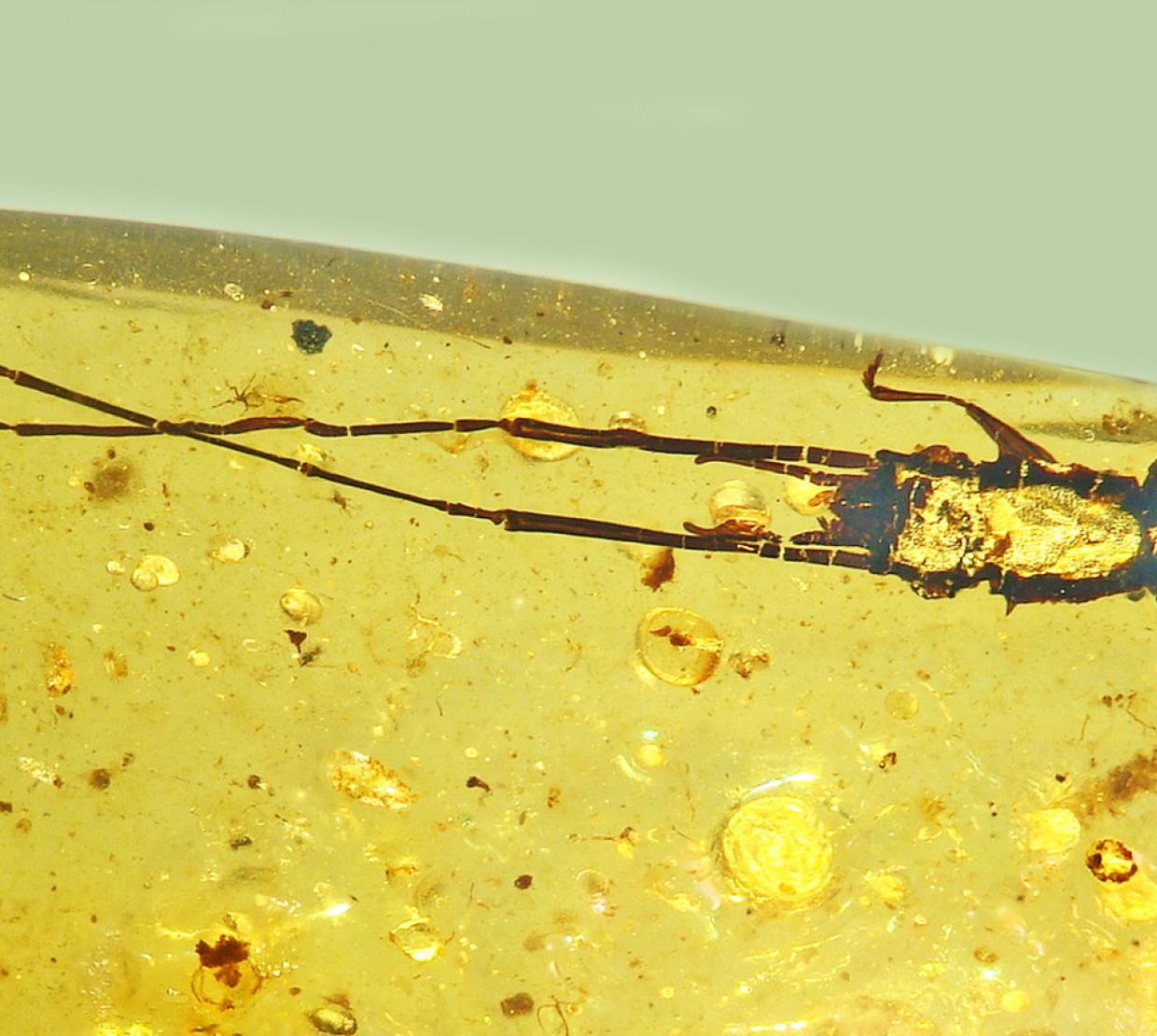One hundred million years ago, as iguanodons and triceratops fled from hungry tyrannosaurs, another biological drama played out on the ground where the giant reptiles trod: Male beetles using their supersized antennae in combat for mates.
Researchers have identified a new species of beetle from Burmese amber, a specimen with antennae nearly 8 millimeters long attached to a 2.3-millimeter body.
George Poinar Jr., who holds a courtesy appointment in the Oregon State University College of Science, and collaborators named the new silvan flat bark beetle Protoliota paleus.
“This new insect differs from a previous member of the genus described in Burmese amber by its small body size, weakly protruding eyes, long mandibles and narrow pronotum,” said Poinar, an international expert in using plant and animal life forms preserved in amber to learn about the biology and ecology of the distant past.
The pronotum is a prominent, plate-like structure covering all or part of the thorax of some insects; the thorax is the middle part of the body, where the legs and wings attach.
“We also see evidence of sexual secretions on tarsal hairs on the fossil beetle, similar to those that attract females on today’s silvanid beetles,” Poinar said. “So we have a scenario of a combative male beetle that chased females under the feet of dinosaurs. David Attenborough shows similar male beetles fighting over females in tropical forests today.”
Although having such long antennae might have its drawbacks, like getting tangled in vegetation and otherwise hindering movement, those extended male antennae come in handy for finding mates as well as battling over them, Poinar said.
“Some modern beetles are known to walk along larval host trees with their antennae outstretched, looking for females that they recognize solely by antennal contact,” he said. “Longer antennae mean a wider reach, increasing the likelihood of encountering a female. And of course the longer the antennae, the bigger the weapons the beetle has at its disposal for combat with other males.”
Read more here.




